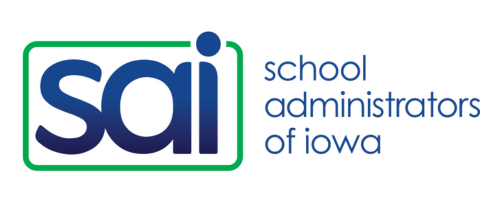1:1 Meetings Mutually Beneficial
Decades of research point to the value of frequent 1:1 meetings between leaders and direct reports. These suggestions can support you in maximizing meeting time with your principals and others whom you supervise.
This summary from Kim Marshall, Marshall Memo #958, October 24, 2022, is reprinted with permission.
In this Harvard Business Review article, Steven Rogelberg (University of North Carolina/Charlotte) says decades of research point to significant, mutual benefits when leaders have frequent one-on-one meetings with direct reports. Leaders “who don’t invest in such conversations,” says Rogelberg, “– who view them as a burden, hold them too infrequently, or manage them poorly – risk leaving their team members disconnected, both functionally and emotionally.” Here are his suggestions:
- Communicating intent and format – Before launching one-on-ones, it’s important that colleagues know the values behind the idea – hearing people’s voices and being a supportive leader. The employee “should drive the agenda,” says Rogelberg, “be actively engaged, communicate candidly, think deeply about problems and solutions, and be willing to ask for help and act on feedback.” People should also know what to expect in terms of frequency and location.
- Frequency – Rogelberg has found the best cadence for one-on-one meetings is once a week for 30 minutes; second best is every other week for 45-60 minutes. There might be a different frequency depending on people’s length of service, preference, the number of direct reports, and whether colleagues are involved in peer mentoring. Rogelberg has found that with less-frequent one-on-ones, it’s difficult to build trust and keep up with issues that arise week by week. He also advises against cancelling these meetings, and when that’s unavoidable, immediately rescheduling.
- Location – Rogelberg’s research shows that employees find in-person meetings slightly more desirable than remote. For in-person meetings, he says, it’s important to choose a place where both participants feel at ease, can be present, and are free of distractions. Interestingly, employees rated their own space as the least desirable location, preferring the leader’s office or a conference room. Some like going out to a coffee shop or taking a walk; it’s important to ask for people’s preference.
- The agenda – One-on-ones are informal, says Rogelberg, but an agenda is helpful, and the employee should shape it. “Collaborating on an agenda,” he says, “can be as simple as having each party create a list of topics to discuss. In the meeting the two should work through first the employee’s list and then the superintendent’s, as time allows.” Alternatively, the superintendent can start the meeting with an open-ended question – for example:
- What would you like to talk about today?
- How are things going with you and your team/staff?
- What are your current priorities, and are there concerns you’d like to talk about?
- Is there anything I can help you with or anywhere I can better support you?
- What do I need to know about or understand from your perspective?
A caveat: agendas shaped by lists or questions like these tend to prioritize short-term issues and fires that need to be put out. Leaders should periodically raise longer-term, bigger-picture questions.
- Starting the meeting – Going into each one-on-one, says Rogelberg, it’s important to “check your emotional state,” because the leader’s mood has a direct impact on tone and content. He recommends turning off e-mail alerts, putting away cellphones, silencing text notifications, and being present. The meeting might start with reiterating goals and hopes for the meeting, some non-work-related, rapport-building chit-chat, mentioning recent wins, and expressing appreciation for good work.
- Listening more than talking – Rogelberg has found that the biggest predictor of one-on-ones’ success is employees’ “active participation as measured by the amount of time that person talks during the meeting” – anywhere from 50 to 90 percent. “Display genuine interest without judgment,” he says, “and acknowledge the employee’s viewpoint even if you disagree with it. Ask questions that clarify and constructively challenge that viewpoint… Stay vigilant about your body language and reactions to ensure that you’re creating a welcoming and safe space.”
- Adding your perspective and being flexible – Having heard what your colleague has to say, says Rogelberg, it may be appropriate “to give honest and specific feedback” or identify root causes and work toward a good solution. Some issues might need to be put off to the next one-on-one.
- Ending well – Finishing on time is important, showing respect for colleagues’ time. “Ideally,” says Rogelberg, “both parties should leave the conversation feeling valued, respected, and well-informed, with clarity about next steps on projects, solutions to problems, and the commitments that each of them has made.” This should be memorialized in some form.
- Following up – Rogelberg recommends regularly asking for feedback on one-on-ones, either informally or in an anonymous survey, with questions like: What’s going well? What’s not going well? Do you have ideas for improvement?
“Make the Most of Your One-on-One Meetings” by Steven Rogelberg in Harvard Business Review, November/December 2022 (Vol. 100, #6, pp. 139-143); Rogelberg can be reached at sgrogelb@uncc.edu.
